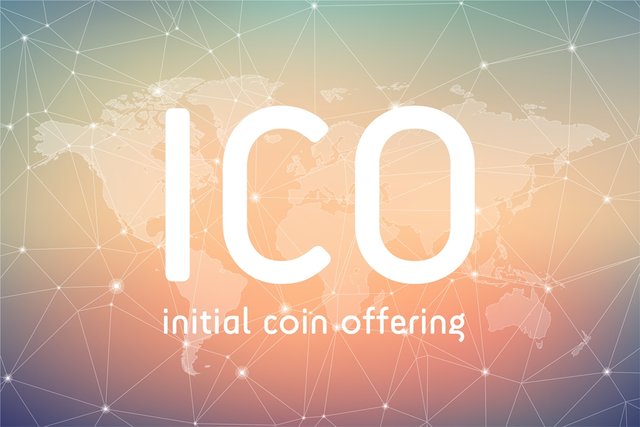#Understanding Token Sales and Initial Coin Offerings

Let’s begin with a disclaimer. What you read here is not investment advice. Instead, use this article as backdrop for your own research and due diligence on initial coin offering (ICO) investment opportunities.
ICOs have been around for a few years, albeit using different names. The first major documented ICO was organized by software engineer J.R. Willett in July 2013 to fund the launch of Mastercoin, an altcoin known today as Omni. He raised over US$5 million. The idea can be traced back to a white paper he published in January 2012 titled ‘The Second Bitcoin White Paper’. It read:
‘A protocol can pay for its own software development, “bootstrapping” itself into existence, utilizing a trusted entity to hold funds and hire developers. … Initial distribution of MasterCoins will essentially be a fundraiser for the trusted entity to provide money to pay developers to write the software which fully implements the protocol’.
In July 2014, the development and launch of Ethereum—the second largest blockchain after Bitcoin in terms of market capitalization—was also funded through an ICO. The project raised over US$18 million by selling premined ether coins. Interestingly, the Ethereum blockchain, through its smart contract applications, has since turned out to be the primary platform for the majority of projects that create, manage and hold ICOs.
Before 2017, ICOs were referred to as token sales, token crowdsales or token generations. The phrase ‘initial coin offering’ grew in popularity throughout the year. In 2017, we witnessed startups raising the highest amounts to date through ICOs. They cumulatively raised over US$1 billion.
The following are just a few examples of ICOs that generated surprise due to the amount of money investors put in them. Power Ledger, an Australian startup that’s building a peer-to-peer market for renewable energy, raised over US$27 million in October, the decentralized cloud storage startup Filecoin raised US$250 million in August, the Tezos blockchain project raised US$222 million in July, and the enterprise blockchain solution startup Block.one raised US$183 million, also in July. About eight projects raised over US$100 million each through ICOs in 2017.
Even with such strong social proof that ICOs are a viable way for projects to acquire funding, it is important to understand how ICOs work under the hood before putting your money into them.
The concept of an ICO is not entirely new. It is actually a hybrid form of the two most used conventional ways of raising capital: initial public offerings (IPOs) and crowdfunding.
What are IPOs?

An initial public offering (IPO) is the process through which a private company makes its equity shares available to the public for purchase through brokerage firms on exchanges, such as the New York Stock Exchange (NYSE), NASDAQ and the Australian Securities Exchange (ASE).
When an entrepreneur comes up with a business idea and a plan to implement it, they either raise the needed seed capital through their own savings, through the support of family and friends, or through loans and credit. These sources are often constrained, however, especially for large projects that can take years to generate returns.
Beginning in the 1940s, investors formed venture capital funds to support early-stage business ideas. Angel investors, or rich individuals willing to fund startups, also became common in the business world. Venture capitalists and angel investors offered funding in exchange for a slice of equity ownership in a startup.
This ownership, along with that of the founders, is exclusive until an IPO is held, where the public is then invited to buy equity shares of the startup. It can often take more than five years after the launch of a business before an IPO is held.
The price of company shares is very low during the early funding rounds. Those who get to buy at this stage make a lot of money by exiting during or immediately after the IPO. However, a lot of regulatory constraints exist around being among the first investors to write a cheque to a startup.
For example, the US Securities and Exchange Commission (SEC) requires that to invest during the pre-IPO phase, you have to be an accredited investor. This means you have to show proof of making over US$200,000 annually for two years in a row, or have a net worth that exceeds US$1 million.
To be an angel investor also requires a minimum investment of US$25,000 in a company or startup. Meanwhile, venture capital firms give an average maximum of US$3 million. It makes sense to argue that conventional investment channels are designed to lock out ordinary people from buying stakes in early stage startups.
In Australia, the government has put a lot of incentives in place to encourage investors to focus on early stage startups, such as a 20% non-refundable tax offset on investments that exceed AUD$1 million.
Even though the general public can buy shares of a company during an IPO, the opportunity comes at a late stage. By the time an IPO occurs, the share price has grown, giving initial or early stage investors huge returns on their investment. The real money is made in the pre-IPO phase, which is not accessible to the general public.
Take Facebook, for example. A report by Fortune indicates that the price of a share in the social networking site was worth US$3.50 in 2008. This means Facebook venture capitalists and angel investors bought their shares of the company at that price or even lower. When the company undertook its IPO—the largest in technology and internet at the time—the share price stood around US$38.
What the ICO concept is changing
An ICO happens when a startup creates digital tokens on a blockchain using smart contract applications and then sells the tokens to the general public. It creates the necessary mechanisms for ordinary people to invest while startups are in the early stages of development.
One can contribute as little as US$5 to the capital of a startup and technically become an investor in its early stages. In fact, most ICOs so far have consisted of entrepreneurs and developers selling ideas in white papers with little or no accompanying proof of concept.
Usually at the pre-ICO stage, and during the main ICO, startups sell the tokens at discounted prices, leaving room for the price to go up and gain value for the benefit of early investors.
While you could easily think of the tokens issued by startups during ICOs as a form of equity, usually they are not. The startup cedes no ownership to those who buy the tokens. And the tokens don’t pay dividends to investors like equity shares do.
Incentives for buying tokens issued through ICOs include:
An expectation that the value of the token will grow with time as the startup scales, thus allowing the investor to make money by selling through exchanges at a higher price than they paid.
The unlocking of premium features offered by the startup. The token buyer can use them as utility tokens or sell them to those who will need them for that functionality.
A feeling of being philosophically or politically connected to a project, and thus having the urge to support it.
Anticipation of the growth of a community that strongly believes in the ideals of the project, driving up the price of the token.
As ICOs gain more attention from regulators, startups are doing all they can to avoid their tokens being classified as securities (shares or stock). Once they are classified as such, the startups issuing them are forced to observe stringent requirements that surround the issuing of securities.
Startups are getting around such requirements by presenting their ICO assets as utility tokens.
Due to strict regulatory requirements, startups holding ICOs are also opting to exclude certain regions. For instance, it is common now to block investors in the US from participating, given that organizers fear retribution from the country’s regulators for not observing laid-down investment requirements.

@cryptojb, I always try to support who contribute to open source project, upvote you.